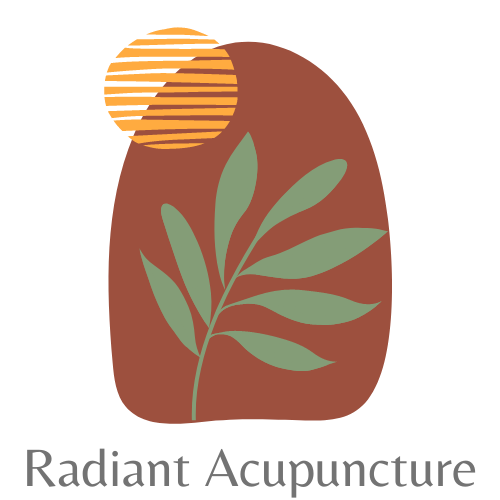Acupuncture FAQs
-
Acupuncture involves gently inserting very thin needles into the body at different locations and depths to initiate the body’s natural healing abilities and promote physical and emotional well-being. Acupuncture was first developed for medical use in China over 2,500 years ago.
-
Acupuncture needles are extremely thin, about the width of two hairs, and most people barely feel them when inserted. While some areas may be more sensitive, the sensation is usually minimal, often just a slight pinch, with many people not even noticing. The therapeutic effects of acupuncture can sometimes produce sensations like heaviness, tingling, or a mild electric feeling along a meridian, which some styles believe enhances healing. Any discomfort is typically mild and temporary, and if it persists, the needles can be adjusted or removed.
-
Acupuncture needles are much thinner than hypodermic needles and are designed to target specific points on the body, known for their electrical sensitivity. Studies have shown that these acupuncture points have lower electrical resistance, making them ideal for stimulating sensory receptors. When needles are inserted, they trigger nerves that send signals to the hypothalamus-pituitary system, leading to the release of neurotransmitters and endorphins. These chemicals play a key role in pain relief, reducing inflammation, and regulating hormones, which is why acupuncture is effective for conditions like back pain, arthritis, PMS, infertility, anxiety, and depression. Additionally, acupuncture can increase circulation, boost the immune system, stimulate the parasympathetic nervous system, and alleviate muscle spasms.
-
Your first treatment will include an intake session where we'll discuss your health history, concerns, and goals. Diagnosis may involve taking your pulse and viewing your tongue. Once you're comfortably settled on the table, we'll continue to chat as acupuncture needles are placed in specific locations based on your condition. Treatments may also include e-stim, moxa, cupping, or guasha therapy as needed. You'll rest with the needles in for 20 or so minutes, enjoying what our patients call a relaxing "acu nap." Afterward, we'll discuss your treatment plan, schedule follow-up sessions, and provide other recommendations.
-
Before your appointment, it's a good idea to have something to eat and reduce your caffeine intake, as caffeine can interfere with the effects of acupuncture and increase sensitivity to the needles. Wear or bring loose, comfortable clothing that's easy to change in and out of. If possible, avoid tongue brushing/scraping that day before your session. Lastly, put your phone on "Do Not Disturb" and prepare to relax.
-
After acupuncture, your body continues to rebalance and integrate the effects of treatment. Take it easy for the rest of the day: rest, hydrate, and give yourself a little space to notice any changes.
Avoid intense workouts, long runs, or heavy lifting for 12–24 hours. Overexertion can counteract the calming and restorative effects of your session. Gentle movement, a walk, or stretching is perfectly fine.
-
Each follow-up begins with a very brief check-in so you can share any changes you’ve noticed and how the last treatment felt. This helps me fine-tune your treatment plan. After that, I’ll guide you into the position we need for that day—face up, face down, or side-lying—and may include 1–2 supportive modalities such as cupping, gua sha, e-stim, or moxa as needed. Follow-up sessions are 50 minutes, with 15–25 minutes of needle retention. If you prefer more rest time, you’re welcome to book an 80-minute session.
-
Mild side effects are common and usually go away within a few hours to a day. You might notice some soreness or tenderness where the needles were placed, mild bruising (especially if you have sensitive skin), or feeling a little tired or sleepy. Some people also feel a bit lightheaded right after their session, or experience an emotional release, such as feeling calm, reflective, or emotional. These responses are normal and a sign that your body is rebalancing. For more details on this please read What to Expect After Acupuncture.
-
Acupuncture is preventive, with benefits that accumulate over time. The frequency of acupuncture treatments depends on your specific condition. Initially, you may need to come in more frequently to accelerate healing, such as twice a week for four weeks. As your symptoms improve, we can space out treatments, moving to weekly sessions, and eventually extending to every 2-3 weeks. Most people do well with bimonthly sessions as their longer term maintenance. It's important not to let too much time pass between sessions, as this can hinder progress. After significant improvement, monthly visits are often ideal for maintaining health and preventing new issues. While everyone's health is unique, most people notice a shift after 3-4 treatments. Generally, acute pain may require a minimum of 6-8 sessions, chronic conditions 8-12 sessions, and menstrual-related issues about 3 menstrual cycles.
-
Herbs aren’t automatically included with acupuncture treatments. Herbal medicine works best when it’s customized to your unique body and health goals, which requires a separate herbal consultation for more depth. This gives us dedicated time to assess needs and design a personalized formula. Many patients schedule both acupuncture and herbal consults, as they complement each other beautifully for faster, longer-lasting results.
-
No, your medical doctor’s diagnosis is plenty! Acupuncturists use our own diagnostic methods (pulse, tongue, meridian palpation, etc.) to create your Acupuncture treatment plans. If there’s something specific you’d like to show me from another medical provider, then you’re welcome to email me! That way doesn’t take away from your session time.


